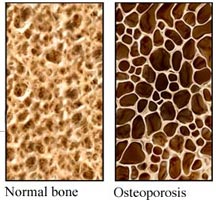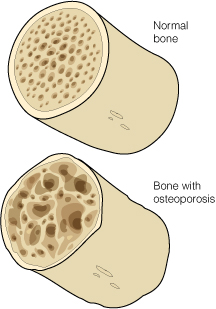Everyday patients ask about dietary supplement that can be taken to improve bone or tissue healing related to a fracture or a sprain. I usually say that if you are healthy and eat a healthy diet, no additional supplements are required. That makes the assumption that patients are healthy (sometimes not the case) and eating a healthy diet (usually not the case). It seems that those who ask the question are usually the healthiest patients. Hmmmmm. Very interesting.
Below is a study that answers that question as it relates to Vitamin D.
From the AAOS.
New Study Finds Nearly Half of Patients Have Low Vitamin D Levels Authors Recommend Screening, Supplementation to Improve Post-Surgical Healing
Forty-three percent of patients scheduled to undergo orthopaedic surgery have insufficient levels of vitamin D and two out of five of those patients had levels low enough to place them at risk for metabolic bone disease, according to a study published this month in the October 6th issue of the Journal of Bone and Joint Surgery (JBJS).
According to the National Institutes of Health (NIH) , vitamin D helps the body absorb calcium and is essential for bone growth and bone remodeling. Without sufficient vitamin D, bones can become thin, brittle or misshapen. People can obtain vitamin D in three ways:
- by eating certain types of food (including fish, dairy products, eggs and mushrooms);
- receiving sun exposure; and
- taking supplements
“Given the importance of vitamin D in musculoskeletal health and its role in bone healing following orthopaedic procedures, low levels may negatively impact patient outcomes,” said orthopaedic surgeon Joseph M. Lane, MD, study co-author and chief of the metabolic bone disease service at the Hospital for Special Surgery in New York.
All 723 patients in the study had been cleared by a specialist in internal medicine for elective surgery in one of the following orthopaedic service areas: Trauma, Foot and Ankle, Sports Medicine (only ACL and/or meniscal repair), Arthroplasty (only primary total hip and knee replacement), Hand (only distal radial or ulnar fracture) and Metabolic Bone Disease (only vertebral compression fracture).
The researchers found that, of the 723 patients studied,
- 411 (57 percent) had normal Vitamin D levels,
- 202 (28 percent) had insufficient levels; and
- 110 (15 percent) were vitamin D deficient.
“We found that nearly half of the patients who were considered ‘healthy’ enough for surgery had significantly low levels of vitamin D, placing them at risk for poor bone healing, osteomalacia (bone and muscle weakness) or even secondary hyperparathyroidism (increased secretion of the parathyroid hormone) in the most severe cases,” said Dr. Lane, who is also a professor of orthopedic surgery at Weill Cornell Medical College in New York. “This was very disconcerting since vitamin D levels can be determined with a simple blood test and low levels can be easily treated with supplements in just a few weeks.”
When results were broken down by orthopaedic service area, researchers uncovered a surprising finding: Despite having the youngest mean population (age 45 ± 14.9 years), the Sports Medicine group of patients had the second-highest rate of vitamin D insufficiency (52 percent) – exceeded only by patients in the Trauma group (66.1 percent). The remaining groups had insufficiency levels of 40 percent (Hand), 38 percent (Arthroplasty), 34 percent (Foot and Ankle) and 18.6 percent (Metabolic Bone Disease).
The researchers noted that their results are consistent with those of similar studies investigating the prevalence of vitamin D deficiency in the general population, including identification of risk factors including obesity and dark skin tone.
“This study should serve as a wake-up call to orthopedists that vitamin D deficiency is widespread, not necessarily tied to age, sex or background and screening for it should be part of routine pre-surgical care for adults,” said Dr. Lane. “Meanwhile, patients who are planning to undergo any orthopaedic procedure can request a screening (specifically, a blood test called the 25 hydroxy Vitamin D test) or ask to be placed on a medically supervised Vitamin D supplement regimen prior to surgery.”
Study specific details:
In a retrospective chart review, Dr. Lane and his colleagues measured Vitamin D levels of 723 patients who were scheduled for orthopaedic surgery between January 2007 and March 2008 and determined the prevalence of normal, insufficient and deficient levels according to the following parameters:
In a retrospective chart review, Dr. Lane and his colleagues measured Vitamin D levels of 723 patients who were scheduled for orthopaedic surgery between January 2007 and March 2008 and determined the prevalence of normal, insufficient and deficient levels according to the following parameters:
- Normal: equal to or greater than 32 nanograms per milliliter (ng/mL)
- Insufficient: less than 32 ng/mL
- Deficient: less than 20 ng/mL
How much Vitamin D does the skin make? Our skin makes a lot of Vitamin D when we spend time in strong sunlight. With about 5-30 minutes of sunlight exposure of head, face, hands, arms, or legs), our skin can make about 1000 IUs of Vitamin D (Vitamin D is measured in units called “International Units,” or IUs.) Vitamin D is therefore known as “the sunshine vitamin.” However, as you age you can lose your ability to manufacture Vitamin D through sunlight.
How much Vitamin D is enough? The American Academy of Orthopaedic Surgeons (AAOS) and recent research support that the body needs at least 1000 IU per day for good health — depending on age, weight, and growth. Indeed, many people need much more than 1000 IU to keep Vitamin D levels in a good range.
In general, babies (especially mothers who are breastfeeding) and small children should intake at least 400 IU of Vitamin D daily. Children over age 5, adolescents, and adults should get a minimum of 1000 IU of Vitamin D each day.
Calcium and Vitamin-D Supplementation for Patients with a Fracture
Calcium and vitamin-D supplementation is a baseline critical component of any fracture treatment therapy. The increased bone turnover stimulated by fracture repair and remodeling leads to an increased metabolism and demand for calcium and vitamin D. The estimated daily intake required for fracture-healing is 1500 to 2500 mg of calcium and 1000 to 2000 IU of vitamin D.
The link below is interesting and worth exploring.
- NIH Office of Dietary Supplements, “Dietary Supplement Fact Sheet: Vitamin D,” http://ods.od.nih.gov/factsheets/vitamind.asp
I know Dr Lane, the author of the study mentioned here. I trained under his supervision while a resident at Sloan-Kettering Memorial Hospital in NYC. He has always been a leader in metabolic bone disease. He is also a great orthopedic surgeon.
Thanks,
JTM, MD

